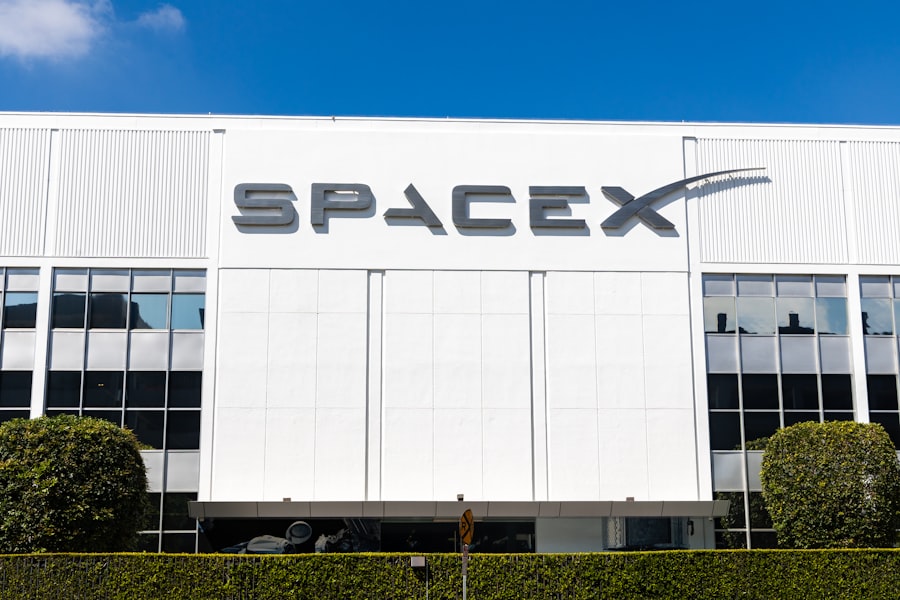The Space Race emerged in the aftermath of World War II, a period marked by intense geopolitical rivalry between the United States and the Soviet Union. This competition was not merely a struggle for military dominance but also a quest for technological supremacy. The onset of the Cold War set the stage for this race, as both superpowers sought to showcase their capabilities and ideologies through advancements in space exploration.
The launch of the first artificial satellite, Sputnik, by the Soviet Union in 1957 marked a pivotal moment in this contest, igniting a sense of urgency within the United States to catch up and assert its technological prowess. As the Space Race unfolded, it became a symbol of national pride and scientific achievement. The competition extended beyond mere satellite launches; it encompassed a wide array of scientific endeavors, including human spaceflight and lunar exploration.
The stakes were high, as each nation aimed to demonstrate not only its technological capabilities but also its ideological superiority. This fervor for exploration and innovation led to significant investments in research and development, ultimately shaping the future of space exploration for decades to come.
Key Takeaways
- The Space Race emerged as a competition between the United States and the Soviet Union during the Cold War.
- Intercontinental Ballistic Missiles (ICBMs) were developed as a result of the Space Race and played a crucial role in the arms race between the two superpowers.
- NASA was created in response to the Soviet Union’s launch of Sputnik, marking the beginning of the space age.
- The launch of Sputnik by the Soviet Union in 1957 marked the dawn of the space age and intensified the space race between the two superpowers.
- The Apollo Program culminated in the historic moon landing in 1969, marking a significant achievement in space exploration.
The Development of Intercontinental Ballistic Missiles
The development of intercontinental ballistic missiles (ICBMs) was a crucial aspect of the Space Race, intertwining military objectives with advancements in rocket technology. Initially conceived as weapons of war, ICBMs utilized the same principles of propulsion and guidance that would later be applied to space exploration. Both the United States and the Soviet Union invested heavily in missile technology, leading to rapid advancements that would have far-reaching implications beyond military applications.
The technological breakthroughs achieved during this period laid the groundwork for future space missions. Engineers and scientists who worked on ICBM programs gained invaluable experience in areas such as propulsion systems, guidance mechanisms, and materials science. This expertise would later be repurposed for civilian space exploration efforts, demonstrating how military competition inadvertently spurred advancements in peaceful scientific endeavors.
As both nations raced to develop more sophisticated missile systems, they simultaneously pushed the boundaries of what was possible in rocketry.
The Creation of the National Aeronautics and Space Administration (NASA)

In response to the growing urgency of the Space Race, the United States established the National Aeronautics and Space Administration (NASA) in 1958. This agency was created to consolidate various aeronautics and space research efforts under one umbrella, allowing for a more coordinated approach to space exploration. NASA’s formation marked a significant shift in how the United States approached its space ambitions, transitioning from a fragmented collection of projects to a unified national effort.
NASA’s establishment also reflected a broader recognition of the importance of space exploration for national security and scientific advancement. With a clear mandate to lead the nation in space endeavors, NASA embarked on ambitious projects that would ultimately culminate in human spaceflight and lunar exploration. The agency’s creation not only signified a commitment to advancing technology but also served as a rallying point for scientists, engineers, and the public alike, fostering a sense of collective purpose in the quest for knowledge beyond Earth.
The Launch of Sputnik and the Dawn of the Space Age
| Event | Date | Significance |
|---|---|---|
| Launch of Sputnik 1 | October 4, 1957 | First artificial satellite in space, beginning of the space age |
| Space Race | 1957-1975 | Competition between the US and the Soviet Union to achieve space milestones |
| Impact on Cold War | 1957-1991 | Intensified rivalry between the US and the Soviet Union |
| Technological advancements | 1957-present | Development of space exploration technology and scientific research |
The launch of Sputnik 1 on October 4, 1957, by the Soviet Union heralded the dawn of the Space Age and sent shockwaves through the United States. This small satellite, which emitted beeping signals as it orbited Earth, represented a monumental achievement in human history. The successful launch demonstrated not only the Soviet Union’s technological capabilities but also its potential for military applications, raising concerns about national security in America.
In response to Sputnik’s launch, the United States accelerated its own space program, leading to increased funding and public interest in science and technology. Educational initiatives were implemented to inspire a new generation of scientists and engineers, emphasizing the need for innovation in fields related to space exploration. The event catalyzed a cultural shift, as Americans began to view space exploration as an essential component of national identity and pride.
The Space Age had officially begun, setting the stage for unprecedented advancements in science and technology.
The Apollo Program and the Moon Landing
The Apollo Program emerged as one of NASA’s most ambitious undertakings, with the ultimate goal of landing humans on the Moon. Initiated in 1961 under President John F. Kennedy’s directive, Apollo represented a bold commitment to achieving what many considered an impossible feat.
The program involved extensive planning, engineering challenges, and rigorous testing to ensure that astronauts could safely travel to lunar orbit and return to Earth. On July 20, 1969, Apollo 11 achieved its historic mission when astronauts Neil Armstrong and Buzz Aldrin became the first humans to set foot on the lunar surface. Armstrong’s famous words, “That’s one small step for man, one giant leap for mankind,” resonated around the world, symbolizing not only a triumph for America but also a significant milestone for humanity as a whole.
The success of Apollo 11 showcased the power of human ingenuity and collaboration, inspiring generations to dream big and pursue careers in science and engineering.
The Evolution of Rocket Propulsion Technology

The evolution of rocket propulsion technology has been a cornerstone of advancements in space exploration. From early solid-fuel rockets to sophisticated liquid-fuel engines, each innovation has contributed to humanity’s ability to reach beyond Earth’s atmosphere. The development of multi-stage rockets allowed for greater payload capacities and more efficient trajectories, enabling missions that were once thought impossible.
As engineers refined propulsion systems, they also explored alternative technologies such as ion propulsion and reusable rocket designs. These advancements not only improved efficiency but also reduced costs associated with launching payloads into space. The ongoing evolution of rocket technology continues to push boundaries, paving the way for future missions that may one day take humans beyond our solar system.
The Advancements in Satellite Technology
Satellite technology has undergone remarkable advancements since its inception, transforming communication, navigation, and scientific research. Early satellites were rudimentary devices primarily used for basic data transmission; however, as technology progressed, satellites became increasingly sophisticated. Modern satellites are equipped with advanced sensors and instruments that allow for high-resolution imaging, weather forecasting, and global positioning systems.
The proliferation of satellite technology has had profound implications for everyday life on Earth. From enabling instant communication across vast distances to providing critical data for climate monitoring and disaster response, satellites have become integral to modern society. As nations continue to invest in satellite capabilities, they are also exploring innovative applications such as satellite-based internet services and Earth observation technologies that can address pressing global challenges.
The Rise of Commercial Space Exploration
In recent years, commercial space exploration has emerged as a dynamic force within the aerospace industry. Private companies such as SpaceX, Blue Origin, and Virgin Galactic have entered the arena previously dominated by government agencies like NASThis shift has led to increased competition and innovation in space travel, with private enterprises developing their own launch vehicles and spacecraft. The rise of commercial space exploration has opened new avenues for research and development while reducing costs associated with launching payloads into orbit.
Companies are now able to offer services ranging from satellite deployment to crewed missions beyond Earth’s atmosphere. This burgeoning sector not only enhances access to space but also fosters collaboration between public agencies and private enterprises, creating a more diverse ecosystem for exploration.
The International Collaboration in Space Exploration
International collaboration has become increasingly vital in advancing space exploration efforts. Recognizing that many challenges transcend national borders, countries have come together to share knowledge, resources, and expertise. Initiatives such as the International Space Station (ISS) exemplify this spirit of cooperation, bringing together astronauts from various nations to conduct scientific research in microgravity.
Collaborative efforts extend beyond human spaceflight; they encompass joint missions to explore celestial bodies such as Mars and asteroids. By pooling resources and expertise, nations can tackle complex challenges more effectively while fostering goodwill among countries with diverse interests. This collaborative approach not only enhances scientific understanding but also promotes peaceful relations through shared goals in space exploration.
The Exploration of Mars and Beyond
Mars has long captivated humanity’s imagination as a potential destination for exploration beyond Earth. Numerous missions have been launched to study the Red Planet’s geology, climate, and potential for past or present life. Rovers like Curiosity and Perseverance have provided invaluable data about Mars’ surface conditions while searching for signs of ancient microbial life.
Looking ahead, plans for human missions to Mars are being developed by various space agencies and private companies alike. These ambitious endeavors aim not only to land humans on Mars but also to establish sustainable habitats for long-term exploration.
The Future of Rocket Science: Interstellar Travel and Beyond
The future of rocket science holds exciting possibilities as researchers explore concepts related to interstellar travel. While current propulsion technologies are limited by the vast distances between stars, innovative ideas such as warp drives or solar sails are being investigated as potential solutions for reaching other star systems within reasonable timeframes. As humanity stands on the brink of new discoveries in space exploration, questions about our place in the universe continue to inspire curiosity and ambition.
The pursuit of interstellar travel represents not only a scientific challenge but also an opportunity for humanity to unite in its quest for knowledge beyond our home planet. As advancements continue to unfold, future generations may one day embark on journeys that take them far beyond what is currently imaginable—into realms that have long been confined to science fiction narratives.
After World War II, the field of rocket science experienced significant advancements, largely driven by the geopolitical tensions of the Cold War. The race to develop more advanced rocket technology was fueled by both military and space exploration ambitions. An interesting article that delves into the post-war developments in rocket science can be found on the website “In The War Room.” This article explores how former wartime technologies were adapted for peacetime purposes, leading to the birth of modern rocketry and space exploration. For more insights, you can read the full article by visiting In The War Room.
WATCH THIS! 🪖How Stolen Nazis Built Cold War Power
FAQs
What is rocket science?
Rocket science is the study and application of the principles of rocket propulsion, which involves the design, construction, and operation of rockets and other spacecraft.
How did rocket science develop after World War Two?
After World War Two, rocket science experienced significant advancements, particularly with the development of intercontinental ballistic missiles (ICBMs) and the space race between the United States and the Soviet Union.
What were some key developments in rocket science after World War Two?
Some key developments in rocket science after World War Two include the creation of the V-2 rocket by Nazi Germany, the development of the first intercontinental ballistic missiles (ICBMs), and the launch of the first artificial satellite, Sputnik, by the Soviet Union.
How did rocket science impact space exploration after World War Two?
Rocket science played a crucial role in advancing space exploration after World War Two, leading to the successful launch of satellites, manned space missions, and the eventual landing of humans on the moon.
What are some notable figures in the field of rocket science after World War Two?
Notable figures in the field of rocket science after World War Two include Wernher von Braun, Sergei Korolev, and Robert H. Goddard, who made significant contributions to the development of rocket technology and space exploration.




